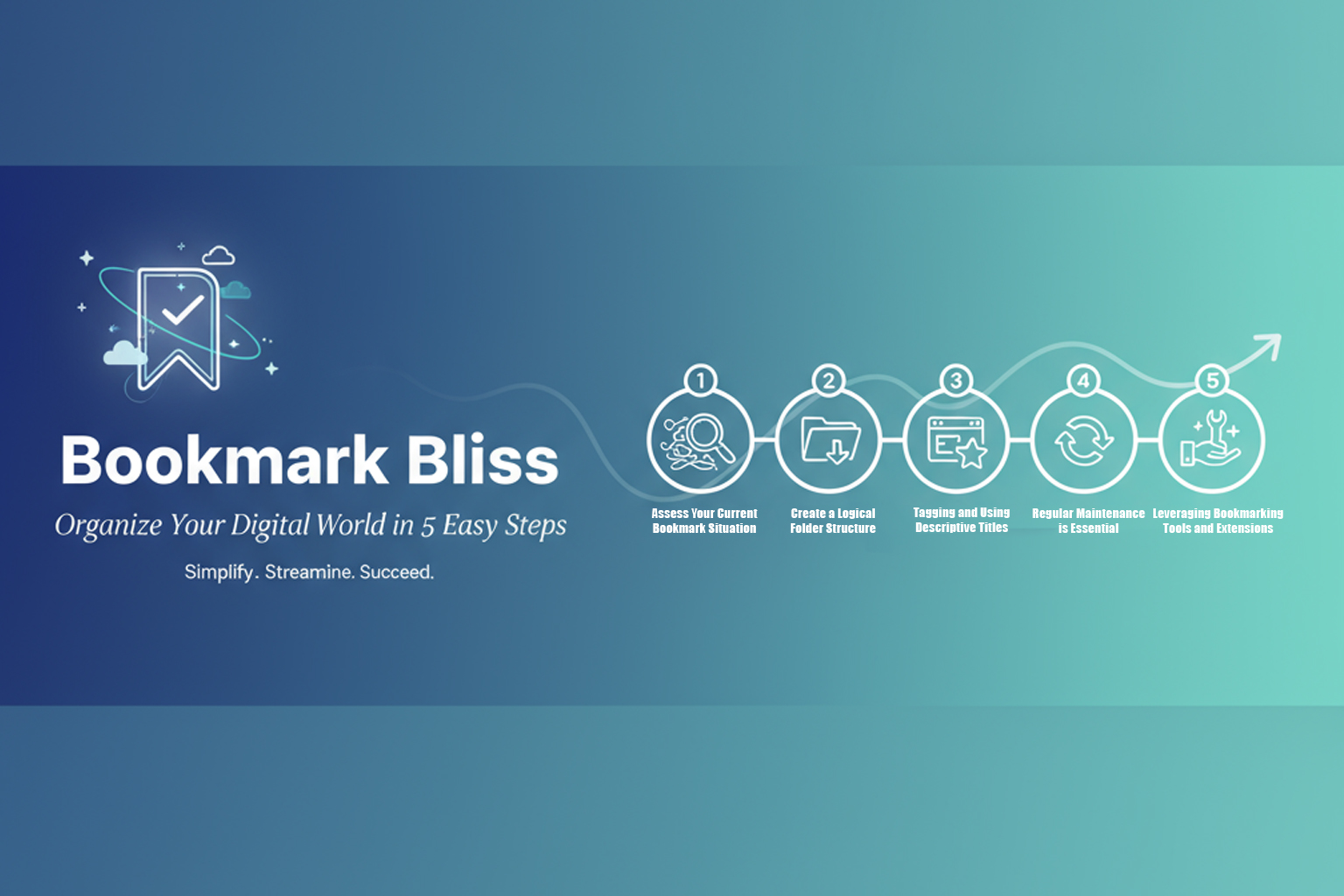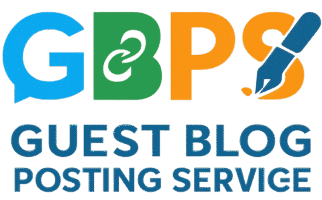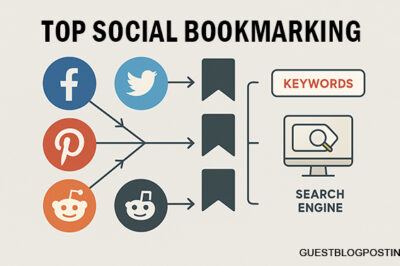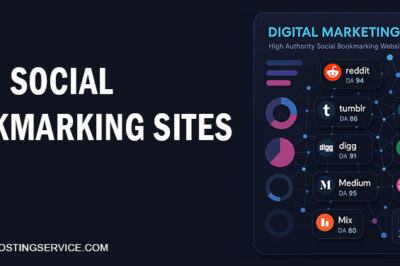
In our fast-paced digital era, organization is key to productivity and clarity. Welcome to “Bookmark Bliss: Organize Your Digital World in 5 Easy Steps.” This guide will walk you through the essential strategies for decluttering your digital bookmarks, making online navigation seamless and efficient. With just a few straightforward techniques, you can achieve a well-organized digital space that fosters focus and creativity.
Why Organizing Bookmarks Matters
Organizing bookmarks isn’t just about tidiness; it’s about enhancing efficiency. Every day, people navigate the vast web for research, leisure, or work. Imagine the time saved when you can find your important links in seconds instead of scrolling through chaotic lists. Keeping your bookmarks organized can reduce stress, foster productivity, and improve your overall digital experience.
Furthermore, having a systematic approach to bookmarking can help avoid information overload. Many individuals feel anxious due to endless links and tabs left open. By mastering your bookmarks, you can maintain mental clarity and regain control over your online world.
Step 1: Assess Your Current Bookmark Situation
The first step to achieving “Bookmark Bliss” is to evaluate your current situation. Take a moment to review all the bookmarks you have saved across various browsers and devices. Are there duplicates? Are there links to sites you no longer use? Performing a thorough assessment allows you to determine what’s truly essential.
Begin by exporting your bookmarks into a single file from your browser. Most major browsers offer this feature, enabling you to gather everything in one place. Once compiled, open the file and start categorizing your bookmarks. This step will give you a clearer vision of how many links you need to address.
Identifying Necessary Bookmarks
As you sift through your collection, ask yourself if each bookmark serves a purpose. Consider the frequency of use and relevance to current projects or interests. Keep bookmarks that are worthwhile and beneficial. A good rule of thumb is to delete any link you haven’t used in the past three months, unless it holds significant sentimental value.
At this stage, it’s helpful to think about the categories you’ll later use for organizing. Identify major themes—such as “Work,” “Personal,” “Research,” and “Hobbies”—to begin streamlining your bookmarks effectively.
Step 2: Create a Logical Folder Structure
Once you’ve assessed your bookmarks, the next step involves crafting a logical folder structure. This is vital in reducing clutter and facilitating quick access to your links. Creating folders allows you to group related bookmarks, which simplifies retrieval and fosters a clean workspace.
Developing Effective Categories
When creating categories, clarity is key. Use intuitive labels that resonate with your browsing habits. For instance, if you often search for recipes, you could create a folder named “Culinary Inspirations.” Alternatively, if you’re a student, “Research Sources” could be invaluable. Enabling easy access not only streamlines your navigation but also allows for efficient project management.
In general, it’s beneficial to limit the number of top-level folders. Overcomplicating your structure can lead to confusion, defeating the purpose of organization. Aim for five to seven main categories, with the option of creating subfolders if necessary.
Popular Folder Ideas
To spark your creativity, here are some popular folder ideas:
- Work Projects: Store links related to your current projects and tasks.
- Learning Resources: Bookmark educational content like online courses, articles, or tutorials.
- Personal Interests: Links to blogs, videos, or hobbies you frequently follow.
- Shopping: Organize e-commerce links for future purchases or ideas.
- Travel Planning: Save links for travel resources, blogs, or booking sites.
Step 3: Tagging and Using Descriptive Titles
A crucial aspect of organizing bookmarks efficiently is leveraging the power of tagging and descriptive titles. While folders are great for categorization, descriptive tags enhance searchability across your links.
Understanding the Importance of Tags
Tags function like labels, offering another layer of organization. You can assign multiple tags to each bookmark, making it easier to locate them based on specific needs at a given time. If you’re researching a topic, for instance, you might tag relevant articles with “research,” “study,” and “resources.”
Most browsers allow you to edit the title of bookmarks. Take advantage of this feature by adding keywords that succinctly describe the content of the link. Instead of a bookmark titled “Article,” you might rename it to “5 Tips for Effective Time Management.” This small change greatly reduces search time and increases productivity.
Utilizing Descriptive Titles to Enhance Retrieval
Quality titles can fundamentally change how efficiently you retrieve information. Opt for clarity by avoiding abbreviations that others might not readily understand. For complex topics, consider adding a brief subtitle or an extra note in the description. This level of detail aids not only your future self but others who may use shared bookmarks.
Step 4: Regular Maintenance is Essential
One of the most overlooked facets of effective bookmark management is the importance of regular maintenance. Just as physical spaces require organization upkeep, so do your digital bookmarks.
Setting a Bookmarking Routine
Establishing a monthly or quarterly review routine can help you keep your bookmark collection in check. During this time, revisit your assessed bookmarks and clean out any outdated or irrelevant links. This habit fosters an environment where clutter doesn’t accumulate.
You can also take this opportunity to reorganize or re-evaluate your categories. If you find that certain folders have become too crowded or others feel underutilized, adapt your organizational structure accordingly.
Creating a Bookmark Archive
As you maintain, consider creating an archive for less frequently used bookmarks that still hold sentimental value or potential future interest. Archiving can clear up valuable space while still allowing you to revisit once in a while.
Step 5: Leveraging Bookmarking Tools and Extensions
In today’s tech-savvy world, numerous tools and browser extensions are available to help streamline your bookmarking process. Integrating these into your routine can significantly enhance efficiency and organization.
Choosing the Right Bookmarking Tools
Here are a few of the popular bookmarking tools that can elevate your digital organization:
- Pocket: Save articles and media from any website and access them later, even offline.
- Raindrop.io: An advanced bookmark manager that allows tagging, organization, and sharing.
- Pinboard: A minimalist solution that integrates social bookmarking and personal archives.
- Bookmark Manager Extensions: Many browsers offer extensions that enhance bookmark organization with advanced features.
Utilizing Extensions for Enhanced Functionality
Browser extensions such as “Evernote Web Clipper” allow you to save complete webpages or snippets. Creating a more manageable workflow using these tools can provide the flexibility to save, categorize, and access your links effortlessly, eliminating the need to manually organize everything.
Frequently Asked Questions (FAQs)
1. How often should I organize my bookmarks?
It’s recommended to review and organize your bookmarks at least every three months. This helps in maintaining clarity and prevents clutter.
2. Are there any tools for backing up my bookmarks?
Yes, most browsers allow you to export bookmarks for backup. Consider using specialized tools like Evernote or Raindrop.io to store links as well.
3. What types of folders should I create for my bookmarks?
Folders should reflect your interests and usage. Common categories include Work, Personal, Research, Shopping, Hobbies, and Transportation.
4. How do tags improve bookmark organization?
Tags allow you to add multiple categories to a single bookmark, making it faster and easier to locate them later. They provide additional context beyond folder names.
5. Can I share my organized bookmarks?
Yes, many bookmarking tools allow you to share your bookmark collection with others, making collaboration easier and fostering shared learning.
Following these five easy steps will lead you to “Bookmark Bliss,” transforming your digital experience into a more productive and satisfying endeavor. Whether you’re a student, professional, or casual internet user, organizing your bookmarks can make technology work for you, instead of the other way around. Happy bookmarking!



